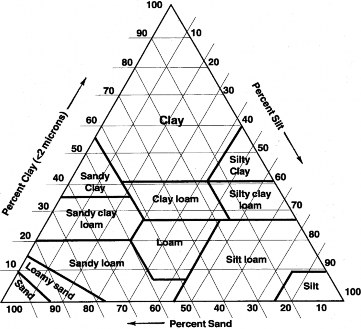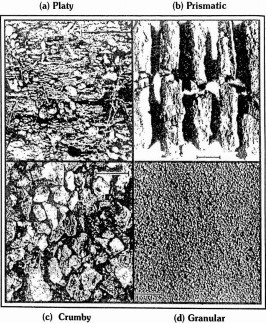5.1. Soil Properties
Soil is the mixture of rock debris and organic materials which develop on the earth’s surface. It contains matter in all three states: solid, liquid and gaseous. The solid portion is partly organic and partly inorganic. The inorganic part is made up of particles derived from the parent material, the rocks which weather to form the soil. The organic portion consists of living and decayed plant and animal materials such as roots and worms. Soil water is a dilute but complex chemical solution derived from direct precipitation and from run-off, and groundwater. The soil atmosphere fills the pore spaces of the soil when these are not occupied by water. Soil atmosphere and water are present in inverse proportion to each other. The actual amounts of each of these components depend upon the type of soil.
The Texture of a soil refers to the sizes of the solid particles composing the soil. The sizes range from clay (less than 0.002mm) to gravel (more than 2mm). The proportions of the different sizes present vary from soil to soil and from layer to layer. Texture largely determines the water- retention properties of soil. Loam texture is best for plant growth (figure 22(i)).


(i) Soil textural classes (ii) Four basic soil structures
